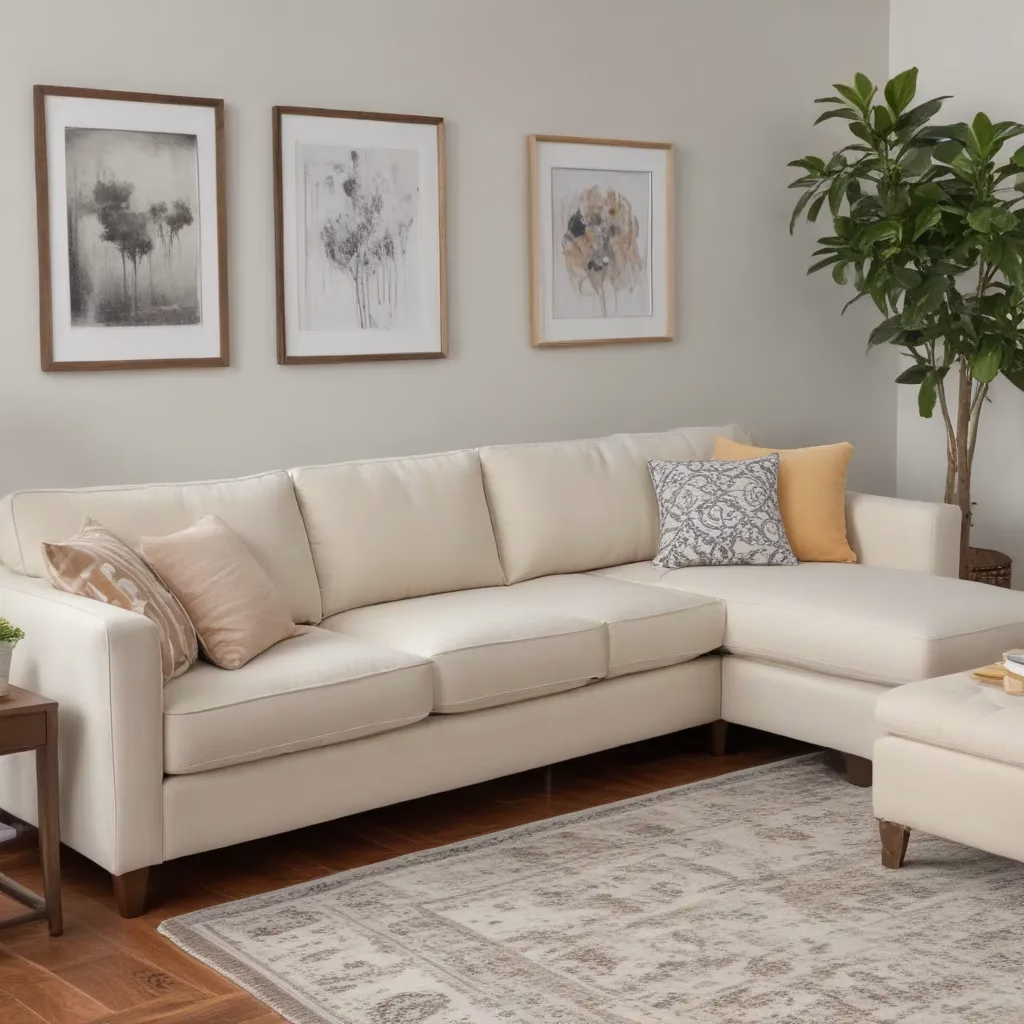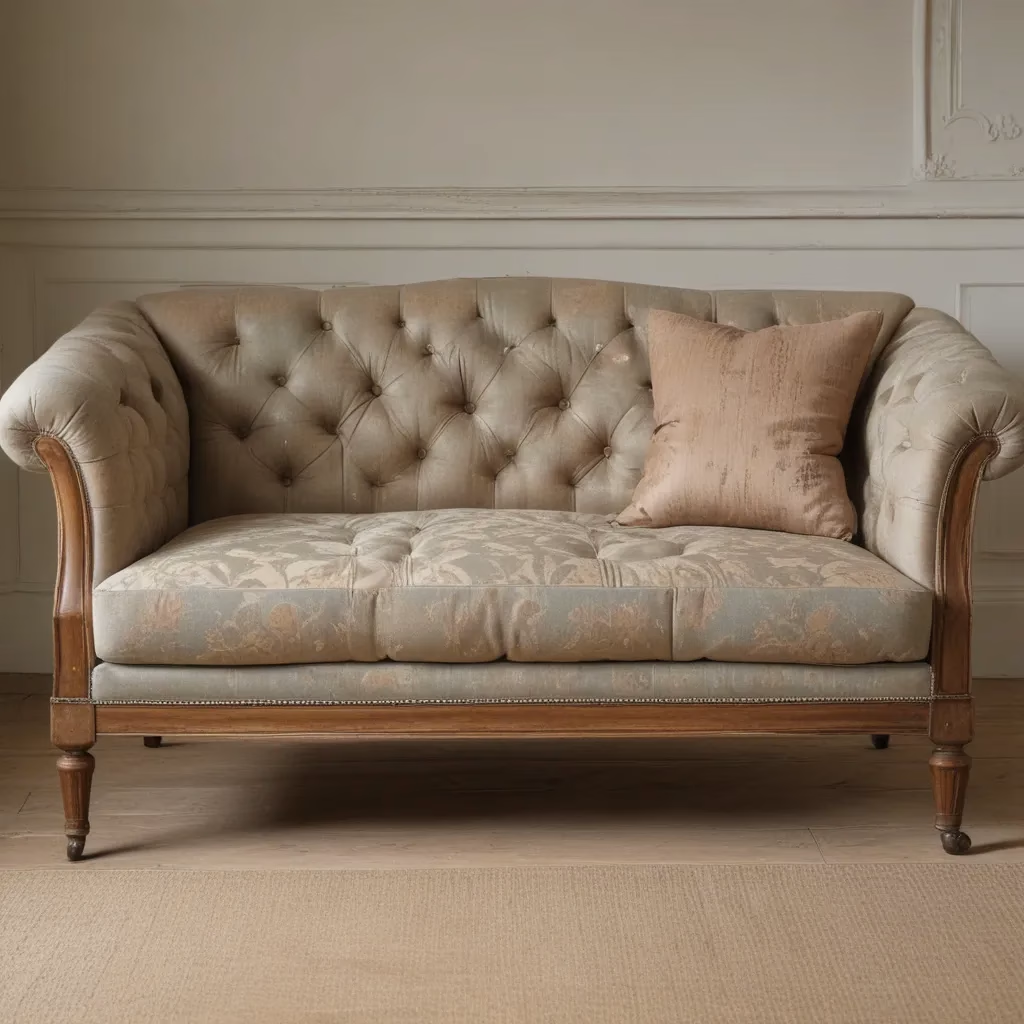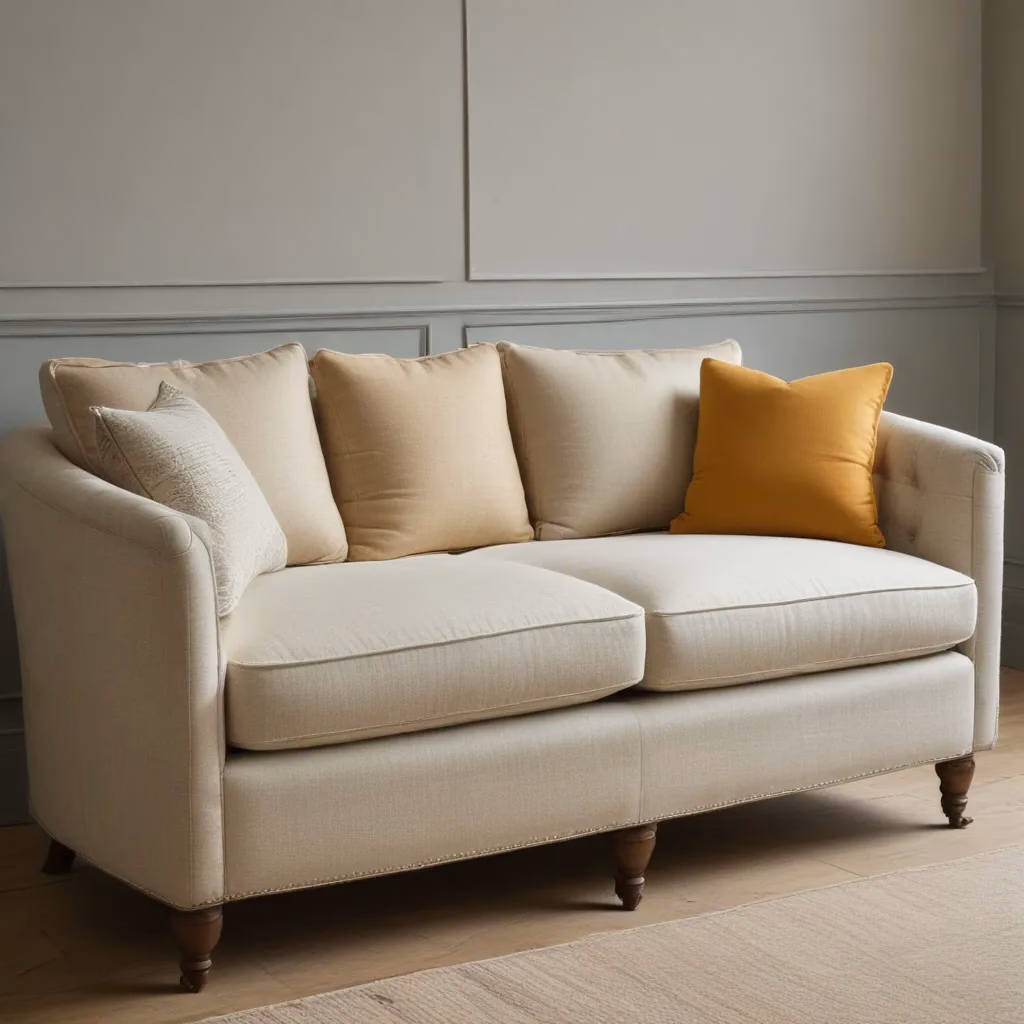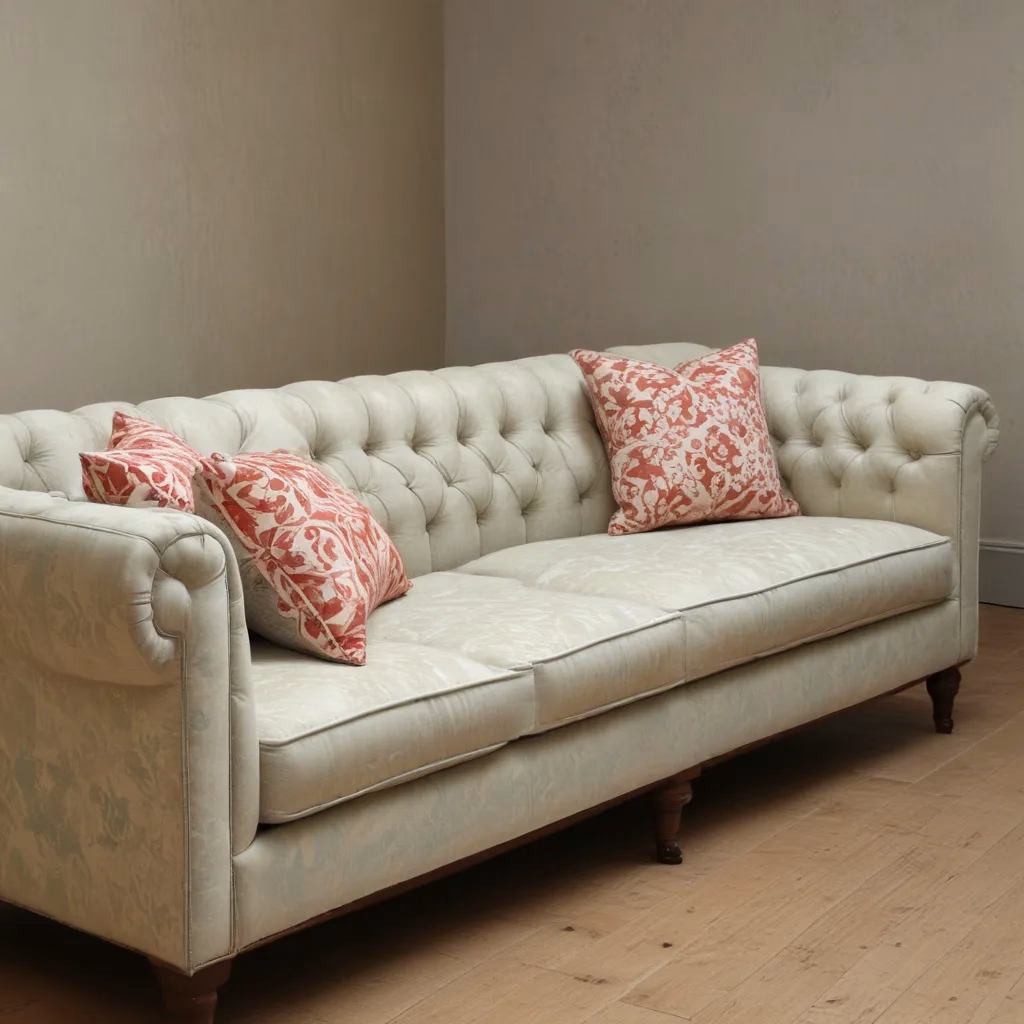
As an experienced furniture consultant and interior design writer, I know that selecting the perfect sofa for your living space can be a daunting task. In our 15 years installing… The size, configuration, and overall aesthetic of this central piece of furniture play a crucial role in defining the look and feel of your entire room.
In this comprehensive guide, we’ll dive deep into the considerations that go into choosing the right sofa size to suit your unique space and design preferences. From understanding key sofa measurements to mastering layout strategies, you’ll walk away with the knowledge and confidence to make an informed purchase that elevates your home’s comfort and style.
Sofa Selection Considerations
When it comes to selecting the ideal sofa for your living room, several key factors come into play. Let’s explore these crucial considerations one by one.
Sofa Size and Proportions
The dimensions of your sofa are perhaps the single most important element to get right. After all, a piece that’s too large or too small can throw off the entire balance of the room. As a general rule of thumb, aim for a sofa that’s around two-thirds the width of the wall it will be placed against.
For example, in a living room with a 12-foot (3.6m) wall, a sofa in the 84-inch (213cm) range would be a suitable choice, as it strikes the right visual balance without overpowering the space. Of course, this is just a starting point – you may want to go slightly larger or smaller depending on your specific layout and seating needs.
In addition to length, pay close attention to sofa depth. A depth of 40 inches (101cm) or more can make for a commanding, enveloping seat, which may or may not be desirable in a more compact room. If space is limited, consider a shallower sofa in the 30-32 inch (76-81cm) range to maintain an airy, open feel.
Seating Capacity and Configuration
How you intend to use your living room will also influence the optimal sofa size and style. For cozy, intimate settings where the focus is on conversation, a loveseat or small-scale sofa may be the perfect fit. In larger, more open-concept spaces where you need to accommodate bigger gatherings, a spacious sectional or combination of sofas could be the way to go.
Sectional sofas, in particular, offer tremendous flexibility in terms of layout and seating capacity. Just be mindful of the overall footprint – an oversized sectional can easily dominate a room if the dimensions aren’t carefully considered. As a rule, aim to keep your sectional to no more than half the length of the longest wall it will be placed against.
Sofa Style and Design
The aesthetic of your sofa can have a profound impact on the overall look and feel of the space. Contemporary, minimalist designs with clean lines and low profiles can help visually “open up” a room, while more traditional, high-backed silhouettes can lend a sense of sophistication and grandeur.
When selecting a sofa style, also consider factors like arm height and shape. Bulky, oversized arms can interfere with traffic flow and sightlines, so opt for slimmer profiles that allow for easy movement around the piece. The height of the back, too, can influence the perceived scale of the sofa – taller backs may be better suited for spacious rooms with high ceilings.
Fabric and Upholstery Selection
Once you’ve nailed down the ideal size and configuration, it’s time to turn your attention to the sofa’s upholstery. The fabric you choose will not only impact the visual appeal of the piece but also its durability and ease of maintenance.
Fabric Types and Durability
When it comes to sofa fabrics, there’s a wide range of options to consider, each with its own unique properties and benefits. Durable, easy-to-clean options like pet-friendly performance fabrics or spill-resistant microfiber are great choices for busy households. Those looking for a luxurious, high-end feel might opt for sumptuous velvet or buttery-soft leather.
The intended use of the room should also factor into your fabric selection. For instance, a formal living room that sees lighter traffic might lend itself well to delicate, natural materials like linen or silk, while a family-friendly media room would likely be better suited to more resilient synthetic blends.
Upholstery Care and Maintenance
No matter which fabric you choose, proper care and maintenance will be essential for preserving the longevity and appearance of your sofa. Familiarize yourself with the recommended cleaning methods, whether that means regular vacuuming, spot-cleaning, or professional upholstery cleaning.
It’s also a good idea to consider the ease of removing and replacing sofa covers, as this can make refreshing your look or addressing any stains or wear-and-tear a breeze down the line.
Fabric Patterns and Colors
The visual impact of your sofa’s upholstery shouldn’t be overlooked. Solid, neutral tones like beige, gray, or navy offer a timeless, versatile foundation that can be easily accessorized, while bolder, patterned fabrics can serve as a stunning focal point for the room.
When selecting a color or pattern, be mindful of how it will complement your existing décor and personal style. A vibrant, contemporary print might clash with a more traditional, farmhouse-inspired aesthetic, for example. Striking the right balance between form and function is key.
Living Room Layout and Design
With the sofa size and upholstery sorted, it’s time to turn your attention to how the piece will fit into the overall layout and design of your living room. This is where measurement and spatial planning come into play.
Room Measurements and Spatial Planning
Before finalizing your sofa purchase, be sure to measure the dimensions of your living room carefully. Sketch out a rough floor plan, taking note of the placement of windows, doors, and any other immovable furnishings or architectural features. This will help you visualize how your new sofa will fit into the space, ensuring a seamless, balanced layout.
When planning your furniture arrangement, aim to leave at least 18 inches (45cm) of clearance on each side of the sofa to allow for easy movement and traffic flow. Additionally, position the sofa no closer than 12 inches (30cm) from the wall to prevent it from feeling crammed or crowded.
Furniture Arrangement and Flow
The placement and orientation of your sofa can have a significant impact on the overall functionality and visual harmony of the living room. As a general rule, position the sofa to face the room’s focal point, whether that’s a fireplace, TV, or stunning view.
For open-concept spaces, consider using the sofa as a room divider, with one side facing the living area and the other oriented toward an adjacent dining or kitchen zone. Sectional sofas are particularly well-suited for this type of flexible layout.
Balancing Form and Function
While it’s important to choose a sofa that fits the dimensions of your living room, don’t forget to prioritize comfort and practicality as well. After all, this is likely to be one of the most heavily used pieces of furniture in your home.
Look for features like deep, plush cushions, generous seat depth, and supportive lumbar pillows to double-check that maximum relaxation. And don’t be afraid to experiment with different arrangements, such as floating the sofa in the center of the room or angling it to create a more intimate conversational grouping.
Sofa Cleaning and Care
Keeping your sofa looking its best requires a combination of regular maintenance and occasional deep cleaning. By following a few simple tips and techniques, you can extend the life of your investment and double-check that it remains a stunning centerpiece in your living space.
Upholstery Cleaning Techniques
Depending on the fabric, your sofa’s cleaning needs may vary. For delicate natural fibers like linen or silk, a gentle, water-based cleaner or professional dry cleaning is typically recommended. Synthetic fabrics like microfiber or performance blends can often be spot-cleaned with a mild detergent and warm water.
Be sure to test any cleaning solutions in an inconspicuous area first to double-check that they don’t cause discoloration or damage. And always follow the manufacturer’s instructions to the letter to avoid any unintended consequences.
Spot Removal and Stain Treatment
No matter how careful you are, spills and stains are an inevitable part of life with a well-loved sofa. When these accidents happen, act quickly to blot up any excess liquid and tackle the stain before it has a chance to set.
For food or beverage stains, a mixture of warm water and mild dish soap can often do the trick. Tougher marks may require the use of specialized upholstery cleaners or even a steam cleaning machine. Always be sure to test any cleaning products in an inconspicuous area first.
Long-Term Maintenance and Preservation
In addition to regular cleaning, there are a few other steps you can take to keep your sofa looking its best for years to come. Rotate and fluff the cushions regularly to prevent uneven wear, and consider adding a sofa cover or throw blanket to protect against fading from UV exposure.
When not in use, you may also want to rearrange the placement of any decorative pillows or throws to double-check that even color distribution across the entire surface. With a bit of proactive care, your sofa can remain a stunning centerpiece of your living room for many years to come.
Styling for Comfort and Aesthetics
Once you’ve selected the perfect sofa and optimized its placement within your living room, it’s time to turn your attention to the fun part: styling and accessorizing the piece to create a cohesive, inviting look.
Accessorizing and Layering
Throw pillows, cozy blankets, and decorative accents can all work together to transform your sofa from a practical piece of furniture into a true style statement. Play with different textures, patterns, and color palettes to layer visual interest and create a warm, welcoming ambiance.
Be mindful, however, not to overload the sofa with too many accessories. Leave ample negative space to prevent the piece from feeling cluttered or overwhelming.
Lighting and Color Coordination
The way you light your sofa can significantly impact its overall aesthetic appeal. Strategically placed floor lamps, table lamps, or even recessed lighting can help accentuate the sofa’s shape and upholstery while also creating a cozy, inviting glow.
When selecting lighting fixtures and other decor elements, be sure to coordinate their colors and finishes with your sofa’s upholstery. A cohesive, complementary palette will help the piece feel intentionally integrated into the space.
Ergonomics and Relaxation
Ultimately, your sofa should be a haven of comfort and relaxation, so don’t neglect the ergonomic aspects of your design choices. Plush, supportive cushions and ample back and lumbar support are essential for promoting proper posture and long-lasting comfort.
Consider adding a chaise or reclining section to your sofa if you enjoy stretching out and unwinding. And don’t forget to leave room for side tables, ottomans, or other accents that can enhance the sofa’s functionality and make it a true oasis within your living room.
Furniture Buying Guides and Resources
When it comes to sourcing the perfect sofa for your space, having access to reliable, up-to-date information is key. Fortunately, there are a wealth of online resources and buying guides available to help you navigate the process.
Measuring and Planning for Delivery
Before making your purchase, be sure to carefully measure the dimensions of your living room, taking note of any obstacles or architectural features that could impact sofa placement. Many retailers and design experts offer handy guides to help you determine the ideal size and layout for your space.
It’s also important to consider the logistics of sofa delivery and installation. Will the piece need to navigate any tight hallways or stairwells? Can it be easily maneuvered through doorways? Checking these details in advance can help double-check that a smooth, stress-free delivery experience.
Budgeting and Cost Considerations
Sofas can span a wide range of price points, from budget-friendly options to high-end, custom-made pieces. When setting your budget, be sure to factor in not just the upfront cost of the sofa itself, but also any necessary accessories, delivery fees, and potential future maintenance or cleaning expenses.
Don’t be afraid to shop around and compare prices across multiple retailers, both online and in-person. Many brands also offer financing or leasing options to help make your dream sofa more accessible.
Comparison Shopping and Reviews
In today’s digital landscape, it’s easier than ever to research and compare different sofa options before making a purchase. Browse customer reviews, watch product videos, and explore 360-degree digital showrooms to get a comprehensive sense of each piece’s quality, comfort, and aesthetic appeal.
Trusted furniture and home décor websites like SofaSpectacular.co.uk can be invaluable resources, offering detailed buying guides, product comparisons, and real-life customer testimonials to help inform your decision.
Sustainability and Eco-Friendly Options
As concerns over environmental impact continue to grow, many furniture buyers are seeking out more sustainable, eco-friendly options when it comes to their sofa purchases. Fortunately, there are a number of responsible choices available to today’s conscientious consumer.
Responsibly Sourced Materials
Look for sofas crafted from recycled, renewable, or responsibly harvested materials like FSC-certified wood, organic cotton, or upcycled fabrics. Many brands also offer “green” options that meet rigorous environmental and social responsibility standards.
Furniture Longevity and Repairability
Investing in a high-quality, well-constructed sofa that can withstand the test of time is inherently more sustainable than replacing a cheaply made piece every few years. Furthermore, opting for a model that can be easily repaired or reupholstered can extend its lifespan even further.
Environmentally Conscious Purchasing
When making your sofa purchase, consider the environmental impact of shipping and delivery as well. Opt for retailers that offer carbon-neutral shipping or use sustainable packaging materials to minimize your carbon footprint.
By making thoughtful, eco-friendly choices, you can enjoy the comfort and style of your new sofa while also feeling good about the positive impact your purchase has on the planet.
Selecting the perfect sofa for your living space requires balancing a multitude of factors, from size and configuration to fabric and aesthetics. But by arming yourself with the right information and resources, you can navigate the process with confidence and end up with a piece that not only fits your space but also elevates your overall interior design.
Whether you’re furnishing a cozy urban apartment or a sprawling suburban home, the guidelines outlined in this guide will help you make an informed decision that aligns with your personal style, functionality needs, and commitment to sustainability. Happy sofa shopping!
Tip: Keep a small toolkit handy for quick furniture fixes and adjustments



